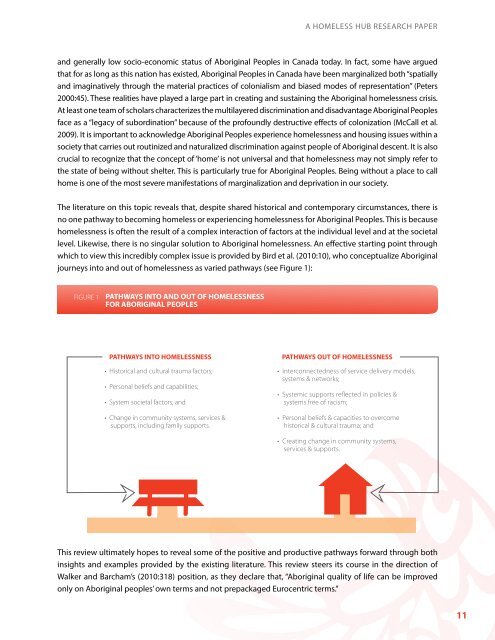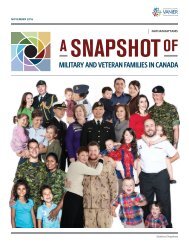1ee0ey1
1ee0ey1
1ee0ey1
You also want an ePaper? Increase the reach of your titles
YUMPU automatically turns print PDFs into web optimized ePapers that Google loves.
A HOMELESS HUB RESEARCH PAPER<br />
and generally low socio-economic status of Aboriginal Peoples in Canada today. In fact, some have argued<br />
that for as long as this nation has existed, Aboriginal Peoples in Canada have been marginalized both “spatially<br />
and imaginatively through the material practices of colonialism and biased modes of representation” (Peters<br />
2000:45). These realities have played a large part in creating and sustaining the Aboriginal homelessness crisis.<br />
At least one team of scholars characterizes the multilayered discrimination and disadvantage Aboriginal Peoples<br />
face as a “legacy of subordination” because of the profoundly destructive effects of colonization (McCall et al.<br />
2009). It is important to acknowledge Aboriginal Peoples experience homelessness and housing issues within a<br />
society that carries out routinized and naturalized discrimination against people of Aboriginal descent. It is also<br />
crucial to recognize that the concept of ‘home’ is not universal and that homelessness may not simply refer to<br />
the state of being without shelter. This is particularly true for Aboriginal Peoples. Being without a place to call<br />
home is one of the most severe manifestations of marginalization and deprivation in our society.<br />
The literature on this topic reveals that, despite shared historical and contemporary circumstances, there is<br />
no one pathway to becoming homeless or experiencing homelessness for Aboriginal Peoples. This is because<br />
homelessness is often the result of a complex interaction of factors at the individual level and at the societal<br />
level. Likewise, there is no singular solution to Aboriginal homelessness. An effective starting point through<br />
which to view this incredibly complex issue is provided by Bird et al. (2010:10), who conceptualize Aboriginal<br />
journeys into and out of homelessness as varied pathways (see Figure 1):<br />
This review ultimately hopes to reveal some of the positive and productive pathways forward through both<br />
insights and examples provided by the existing literature. This review steers its course in the direction of<br />
Walker and Barcham’s (2010:318) position, as they declare that, “Aboriginal quality of life can be improved<br />
only on Aboriginal peoples’ own terms and not prepackaged Eurocentric terms.”<br />
11





